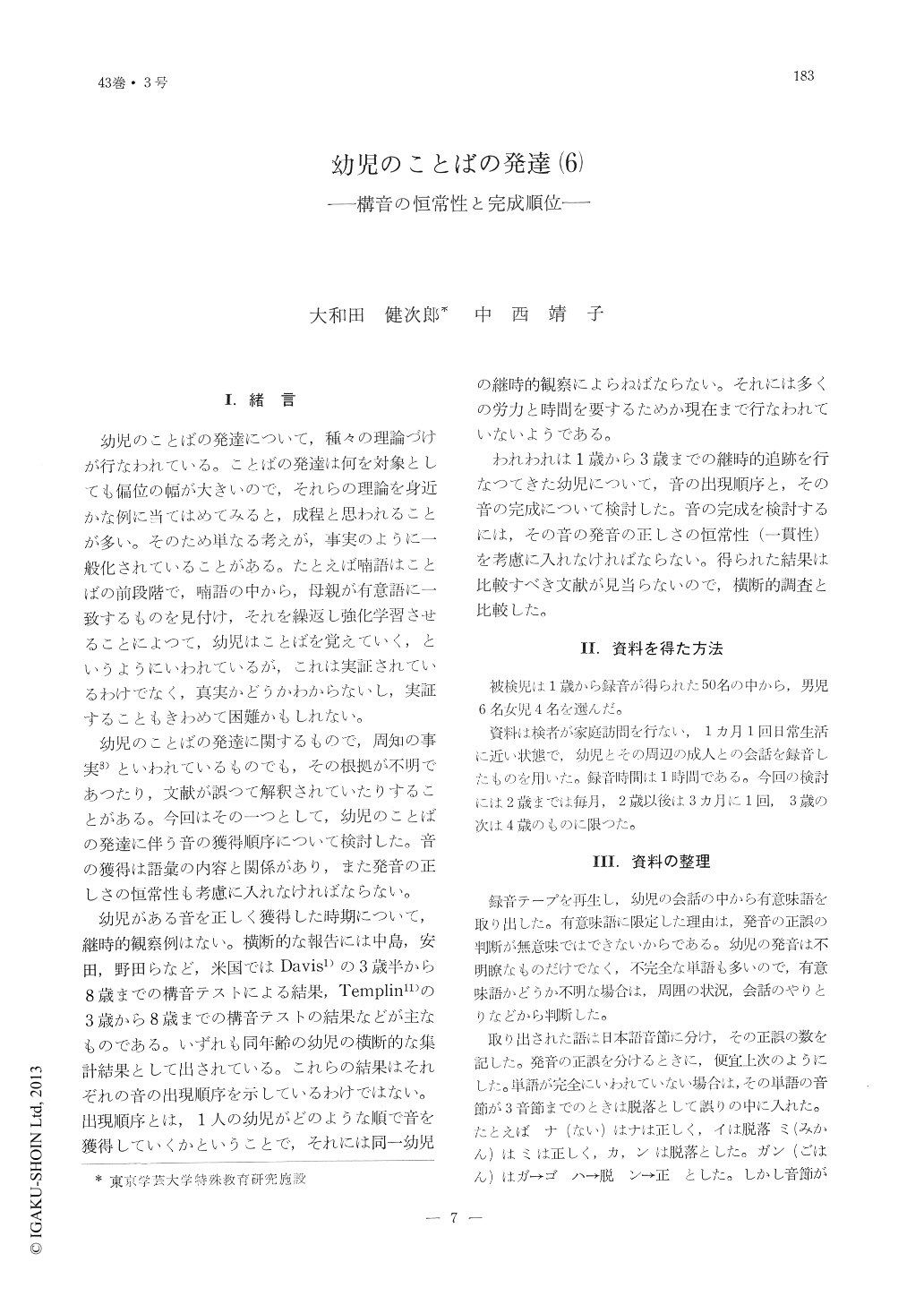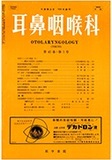Japanese
English
- 有料閲覧
- Abstract 文献概要
- 1ページ目 Look Inside
Ⅰ.緒言
幼児のことばの発達について,種々の理論づけが行なわれている。ことばの発達は何を対象としても偏位の幅が大きいので,それらの理論を身近かな例に当てはめてみると,成程と思われることが多い。そのため単なる考えが,事実のように一般化されていることがある。たとえば喃語はことばの前段階で,喃語の中から,母親が有意語に一致するものを見付け,それを繰返し強化学習させることによつて,幼児はことばを覚えていく,というようにいわれているが,これは実証されているわけでなく,真実かどうかわからないし,実証することもきわめて困難かもしれない。
幼児のことばの発達に関するもので,周知の事実8)といわれているものでも,その根拠が不明であつたり,文献が誤つて解釈されていたりすることがある。今回はその一つとして,幼児のことばの発達に伴う音の獲得順序について検討した。音の獲得は語彙の内容と関係があり,また発音の正しさの恒常性も考慮に入れなければならない。
Meaningful utterances of ten children were collected from the monthly one-hour recordings continued from the subjects' one year to three years of age. The syllables of the meaningful utterances were devided into either of the correct or of the wrong articulation, and the percentages of correct sounds were calculated for each phonemic group. The results were as follows:
1) Though there was no definite order of appearance in individual phonemes, the patterns of development in consistency of correct articulation could be devided into two groups:one with p, b, m, t, d, n, k, g, w, j, dʒ, and tʃ with earlier attainment of consistency in correct articulation and the other h, ç, s, ʃ, ts, dz, and r with later and slower attainment. The former reached its consistent correctness (over 90% correctness of the sounds used) at about 22 months, and the latter developed from about 2 years of age with much individual differences in the speed of development.
2) The comparison between the present data and the articulation test results previously reported by other writers showed much earlier acquirement of correct articulation in the present study.
3) The sounds that appeared earlier in the meaningful utterances did not always reach consistent correctness earlier.

Copyright © 1971, Igaku-Shoin Ltd. All rights reserved.


